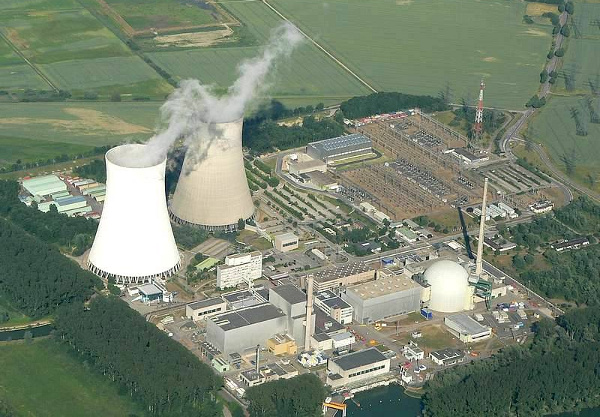| Tikalon Blog is now in archive mode.
An easily printed and saved version of this article, and a link
to a directory of all articles, can be found below: |
|
This article |
| Directory of all articles |
Seawater Uranium
July 15, 2010
It's come as a complete surprise to some people, but
nuclear energy seems to be the most environmentally friendly energy source we have. The US now has 105 operating nuclear reactors that provide 18% of the total electrical demand. The US
Nuclear Regulatory Commission has received eighteen applications for construction of new nuclear power plants in the last three years.[1] Many of these applications are for reactors with enhanced safety features, such as passive air cooling of the reactor containment vessel.[1] No matter the design, all these reactors have one thing in common; namely, the need for
uranium fuel.
In a
previous article (The Manganese Conspiracy, June 9, 2010), I wrote how parts of the ocean floor are littered with baseball-sized
nodules that contain up to 30% manganese and 1.5% nickel. These nodules are produced over the course of tens of millions of years by a slow chemical process. Such concentration of particularly valuable elements is nice - if you're willing to wait millions of years. If you need a faster way, certain plants are quite adept at concentrating specific elements from the environment. Some Japanese researchers are attempting the use of
seaweed to harvest uranium from seawater.[2]

The Philippsburg nuclear power plant (Germany). Photo by Lothar Neumann.
Uranium, of course, is a
heavy metal, and there has been previous work on heavy metal accumulation in plants. The generic name for this process is
phytoremediation. In 1999, G. Porçbska and A. Ostrowska of the Institute of Environmental Protection,
Warsaw, Poland, published an article[3] on the possible use of various plant species (
Lactuca serriola,
Chenopodium album,
Artemisia vulgaris and
Atriplex nitens) to remove several hundred grams of
lead and
cadmium, up to 2 kg of
copper, and 20 kg of
zinc per
hectare of cultivated land.
There are four billion metric tons of uranium dissolved in seawater.[2] This sounds like a lot, but the
oceans contain 1.4 x 10
21 kilograms of water, so the uranium concentration is just three parts per billion. Traditional chemical extraction seems out of the question. The salt content is 3.5%, so there are a lot of other contained metals, but the
Japanese Atomic Energy Commission has developed a synthetic
polymer that adsorbs uranium. A thirty day exposure of fibers of this polymer to flowing seawater resulted in a yield of 1.5 grams of
yellowcake uranium per kilogram of fiber. The
Mitsubishi Research Institute is pursuing the "phyto" approach. They're trying to
genetically engineer seaweed to absorb uranium selectively. What's left of the seaweed can be turned into biofuel, a win-win situation.[2]
References:
- Jesse Emspak, "Nuclear Power Could See Revival," International Business Times Online, July 13, 2010.
- Sally Adee and Anne-Marie Corley, "Uranium From Seawater," IEEE Spectrum Online, June, 2010.
- G. Porçbska and A. Ostrowska, "Heavy Metal Accumulation in Wild Plants: Implications for Phytoremediation," Polish Journal of Environmental Studies Vol. 8, No. 6 (1999), 433-442.
- Phytoremediation Page on Wikipedia.
- Phytoremediation, Hyperaccumulators Page on Wikipedia.
- Hyperaccumulators Table on Wikipedia.
Permanent Link to this article